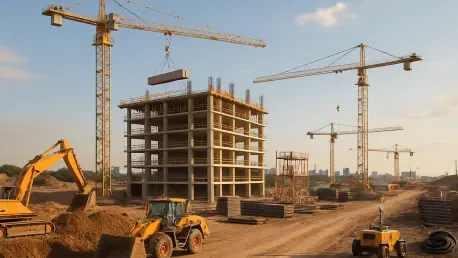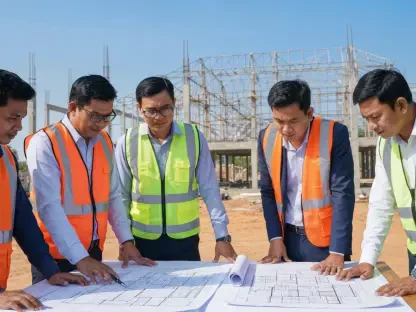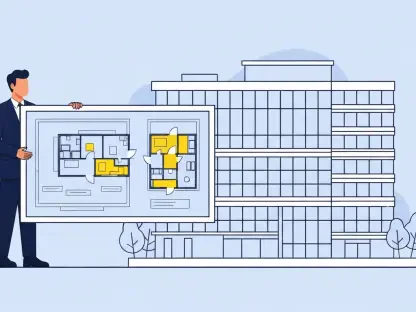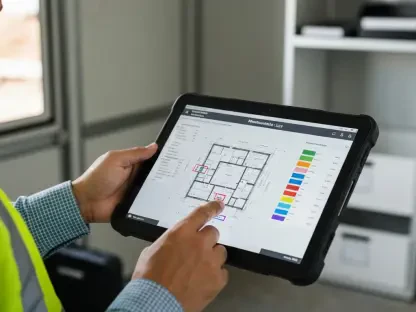I’m thrilled to sit down with Luca Calaraili, a seasoned expert in the construction industry with a deep background in design and architecture. With years of experience under his belt, Luca has not only mastered the technical aspects of the field but also developed a keen interest in how technology can revolutionize construction practices. Today, we’ll dive into his insights on leadership transitions, industry trends, and the innovative tools shaping the future of infrastructure development, drawing parallels to recent shifts at major industry players.
How has your background in design and architecture shaped your perspective on leadership within the construction industry?
My journey in design and architecture has given me a unique lens on leadership. Early in my career, I learned that successful projects hinge on clear communication between diverse teams—engineers, architects, and contractors. That taught me the importance of fostering collaboration and trust as a leader. Designing structures isn’t just about aesthetics; it’s about solving problems under tight constraints, which mirrors the challenges of steering a company. You need vision, but also the grit to execute it. That balance has been central to how I approach any leadership role.
What lessons from past roles have you found most valuable when navigating transitions or taking on new responsibilities in this field?
One of the biggest lessons I’ve carried with me is the need to understand the operational heartbeat of an organization before making changes. In a previous role, I stepped into a team that was struggling with inefficiencies. Instead of jumping to solutions, I spent time on the ground, talking to project managers and site workers. That hands-on insight helped me pinpoint bottlenecks and build trust with the team. Transitions are delicate—you can’t just impose a new direction without understanding the existing culture and strengths. It’s about blending your experience with what’s already working.
When you look at a company’s strengths in construction, what key factors do you think position an organization for long-term success?
I believe it comes down to expertise in core markets and a strong operational foundation. Companies that dominate in specific areas—like transportation infrastructure or urban development—tend to have deep-rooted relationships and specialized knowledge that give them an edge. Beyond that, financial stability is critical; it allows a firm to weather industry fluctuations and invest in growth. I’ve seen firsthand how companies with a clear focus and robust balance sheets can pivot faster when opportunities arise. Building on those strengths means doubling down on what you’re best at while staying open to innovation.
What opportunities in the construction and infrastructure sector are you most excited about right now?
I’m really energized by the surge in infrastructure investment globally, especially in regions prioritizing sustainability and smart cities. There’s a huge push for projects that integrate green technologies, like energy-efficient buildings or renewable energy hubs. In the U.S. alone, the pipeline for public works projects is massive, and that’s creating a ripple effect of opportunity. I’m particularly excited about how companies can position themselves as leaders in sustainable construction—there’s both a moral and business case for it. The challenge is scaling these initiatives without compromising on quality or timelines.
How do you see the rapid evolution of the construction industry impacting companies trying to stay competitive?
The industry is changing at a breakneck pace, largely due to technology and shifting client expectations. Digital tools like Building Information Modeling (BIM) and AI-driven project management are no longer optional—they’re table stakes. Companies that don’t adapt risk falling behind on efficiency and cost control. Beyond tech, there’s a growing emphasis on sustainability and resilience in design, which means rethinking traditional methods. Staying competitive requires a mindset shift: embracing innovation, upskilling teams, and being proactive about industry trends rather than reactive. It’s a tall order, but the rewards are significant.
With construction planning on the rise, how can companies best prepare to capitalize on this growth over the next few years?
Growth in planning is a fantastic signal, but it demands preparation. Companies need to ensure they have the workforce and supply chain capacity to handle increased demand. I’ve seen projects stall because of labor shortages or delayed materials, so building strong partnerships with suppliers and investing in talent pipelines is key. It’s also about strategic bidding—focusing on projects that align with your strengths rather than overextending. Lastly, leveraging data analytics to forecast demand and risks can give firms a head start. It’s all about positioning yourself to scale smartly while maintaining quality.
Given the uncertainties like rising material costs and policy shifts, what strategies do you recommend for navigating these challenges?
Uncertainties are part of the game in construction, but they can be managed with foresight. Diversifying supply chains is a must—relying on a single source for materials is a recipe for trouble when costs spike or policies change. I also advocate for building flexibility into contracts to account for price volatility. On the policy front, staying engaged with industry associations can provide early warnings about regulatory shifts. Ultimately, it’s about risk management—scenario planning and maintaining strong cash reserves can help weather unexpected storms. I’ve seen companies thrive in tough times by staying nimble and proactive.
What is your forecast for the construction industry’s direction in the coming years?
I’m optimistic about where the industry is headed, despite the hurdles. I think we’ll see a continued push toward digital transformation—think drones for site monitoring, AI for cost estimation, and more modular construction to speed up timelines. Sustainability will remain a driving force, with stricter regulations and client demands shaping how we build. Infrastructure spending will likely keep growing, especially in the U.S. and developing markets, but the challenge will be managing labor shortages and cost pressures. Companies that invest in tech and talent now will be the ones leading the pack in five years. It’s an exciting time to be in this space, with plenty of room for innovation to redefine what’s possible.









